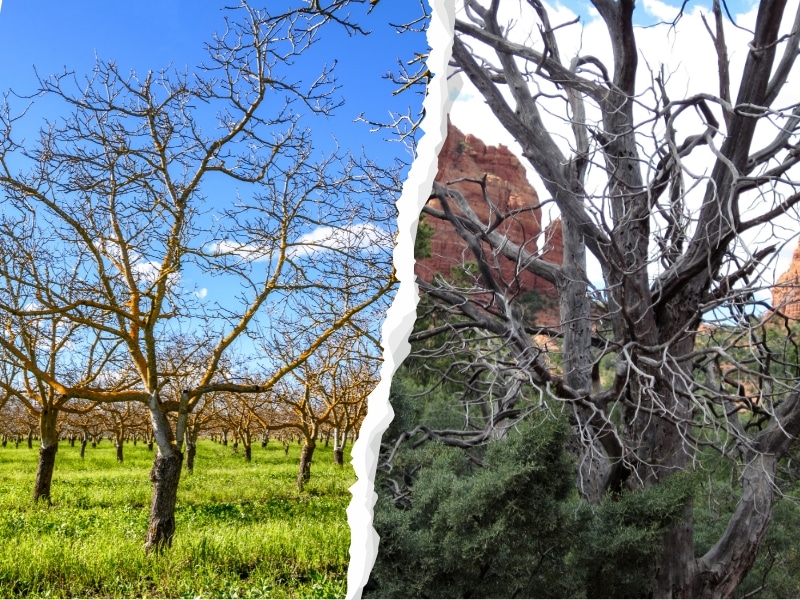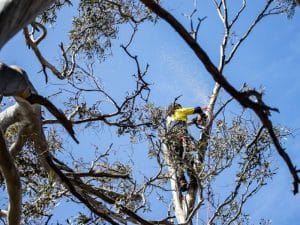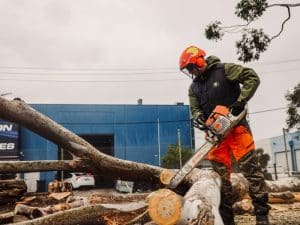When you look at a tree, it might seem like something is wrong, but it can be hard to tell whether it’s dead or just dormant. This is especially true in regions like Melbourne, where the changing seasons can affect trees in various ways. Understanding whether a tree is dead or dormant is crucial, especially if you’re considering tree removal. This article will explore the key indicators that help you tell the difference and what steps you should take.
What are the key signs of tree dormancy?
Dormancy is a natural process for many trees, especially in cooler months. Trees become dormant to conserve energy and survive harsh conditions. Here are the key signs to look for:
- Leaf drop: One of the most common signs of dormancy is the shedding of leaves. Many deciduous trees lose their leaves in winter as part of their dormancy cycle.
- Slowed growth: During dormancy, trees stop growing. You may notice that there’s little to no new growth on the branches during this time.
- Branch flexibility: Dormant trees have flexible branches. If a branch snaps easily when bent, it likely indicates a dead tree, not a dormant one.
- Less watering needed: Dormant trees require less water compared to when they’re in their active growth phase.
How can you differentiate between a dead and a dormant tree?
While dormancy is natural, dead trees display distinct characteristics. To tell the difference, observe these factors:
- Leaf colour and condition: In dormant trees, the leaves will usually turn brown but remain attached to the branches. Dead trees, on the other hand, may have no leaves at all, or the leaves may have fallen prematurely.
- Brittle branches: Dormant trees generally have flexible branches. Dead trees often have brittle branches that break easily under minimal pressure.
- Signs of disease or pests: If a tree is diseased or infested with pests, it may appear dead, but further inspection can reveal underlying issues like visible fungal growth or insect activity.
- Bud development: Dormant trees may show buds that haven’t yet opened, while dead trees won’t have any signs of new growth, even when the season changes.
- Bark condition: Healthy dormant trees often have intact bark, while dead trees may show peeling, cracking, or missing bark.
Identifying the signs of a dying tree early can help prevent further decline and potential hazards.
What role does the tree’s location play in dormancy?
The tree’s location plays a significant role in determining whether it’s dormant or dead. Here’s why:
- Climate impact: Trees in regions with colder winters, like Melbourne, may enter dormancy in response to temperature changes. If the tree is exposed to extreme conditions, it may show signs of stress or even die.
- Sun exposure: Trees in shaded areas might enter dormancy later or show slower recovery, while trees in full sunlight may enter dormancy earlier or show more resilience.
- Water availability: Areas with less rainfall may cause trees to go dormant prematurely, but too much water can lead to root rot, making a tree look dead.
- Urban environment: Trees in urban settings may experience stress due to pollution, restricted root space, and heat from buildings, which can affect their health and make them more susceptible to dying.
Recognising the signs of a dying tree early on is crucial for timely intervention and potential preservation.
Why should you examine the tree’s branches and leaves?
Your tree’s branches and leaves are crucial indicators of its overall health. Here’s what to look for:
- Leaf health: Healthy leaves are vital for photosynthesis. If your tree’s leaves are turning brown, curling, or showing unusual spots, this might indicate more than just dormancy.
- Branch flexibility: In dormant trees, branches should remain flexible. If they snap easily, it’s often a sign of a dead tree.
- Twig growth: Dormant trees may show little to no new twig growth, but you should still be able to see some. Dead trees have no new growth at all.
- Leaf buds: Dormant trees may have buds that are preparing to sprout. A lack of buds can be a sign of a dead tree.
Examining the tree’s branches and leaves is essential, as healthy trees provide numerous benefits in urban environments, such as improving air quality and providing shade.
Why is it important to understand tree dormancy before considering removal?
Before deciding to remove a tree, understanding whether it’s dormant or dead is essential. Removing a tree prematurely can lead to unnecessary costs and damage. Trees that are dormant will likely recover once the growing season resumes. In contrast, dead trees could pose safety risks and need immediate attention. Understanding tree dormancy also helps determine the best time to remove trees safely and efficiently, minimising disruption to the tree’s natural cycle and surrounding ecosystems.
What should you do if you suspect the tree is dead or causing safety concerns?
If you suspect your tree is dead, here’s what to do:
- Call a professional: Contact a qualified arborist or tree service for a professional evaluation of your tree’s health and to remove dead trees safely.
- Avoid risks: Dead trees can pose risks such as falling branches or complete tree failure. Don’t attempt to remove it yourself.
How can an arborist assist in determining whether a tree is dead or dormant?
An arborist is a professional trained to assess the health of trees. Here’s how they can help:
- Expert evaluation: Arborists have the tools and knowledge to evaluate whether a tree is dead or just dormant.
- Safety assessments: They can assess the risk a tree may pose, especially in urban environments where trees are close to buildings or power lines.
- Tree care recommendations: Arborists can provide guidance on whether a tree should be pruned, treated, or removed.
How can tree removal and stump grinding help with dead trees?
If a tree is determined to be dead, removing it is essential for safety and property health. Here’s how tree removal and stump grinding can help:
- Preventing damage: Dead trees can become hazardous, especially in storms. Removing them reduces the risk of property damage or injury.
- Clearing the area: Stump grinding clears the area of unsightly and potentially hazardous stumps, improving the aesthetic and usability of your yard.
- Encouraging new growth: Tree removal allows space for new trees or plants, enhancing the beauty and biodiversity of your garden.
Need assistance with dead tree removal?
At The Yard, our qualified arborists specialise in tree removal, stump grinding, and all aspects of tree care. Whether you need a hazardous tree removed, a stubborn stump ground down, or general maintenance to keep your trees healthy, we provide expert solutions tailored to your needs. We also offer professional tree removal in Craigieburn, helping local businesses manage their trees safely and efficiently. If a tree is posing a risk to your property, interfering with structures, or simply needs to be cleared for a new project, our team is equipped with the expertise and equipment to handle the job with precision and care. Don’t wait until it’s too late—contact The Yard for a tree assessment and safe, professional tree care across Melbourne.




